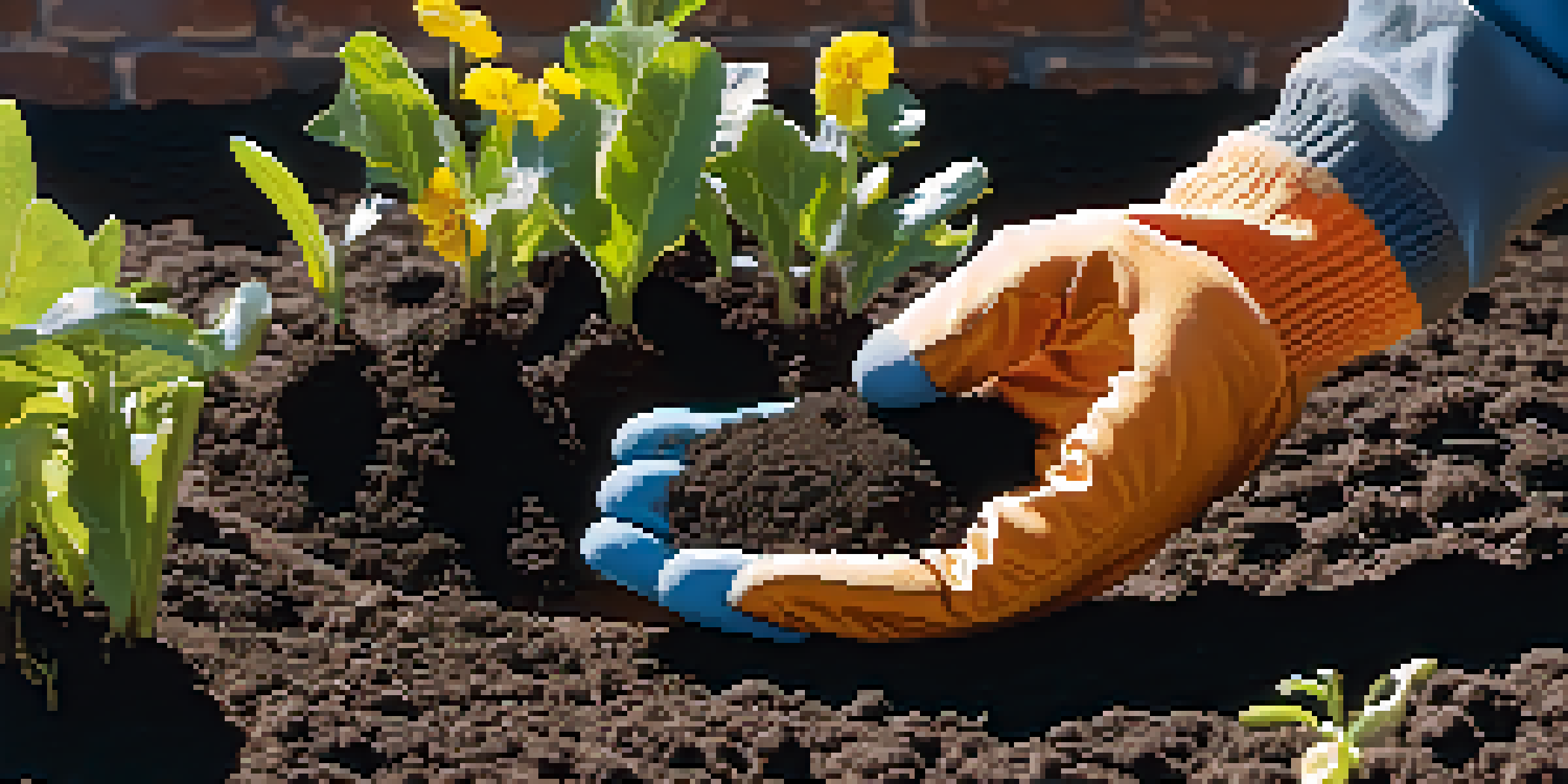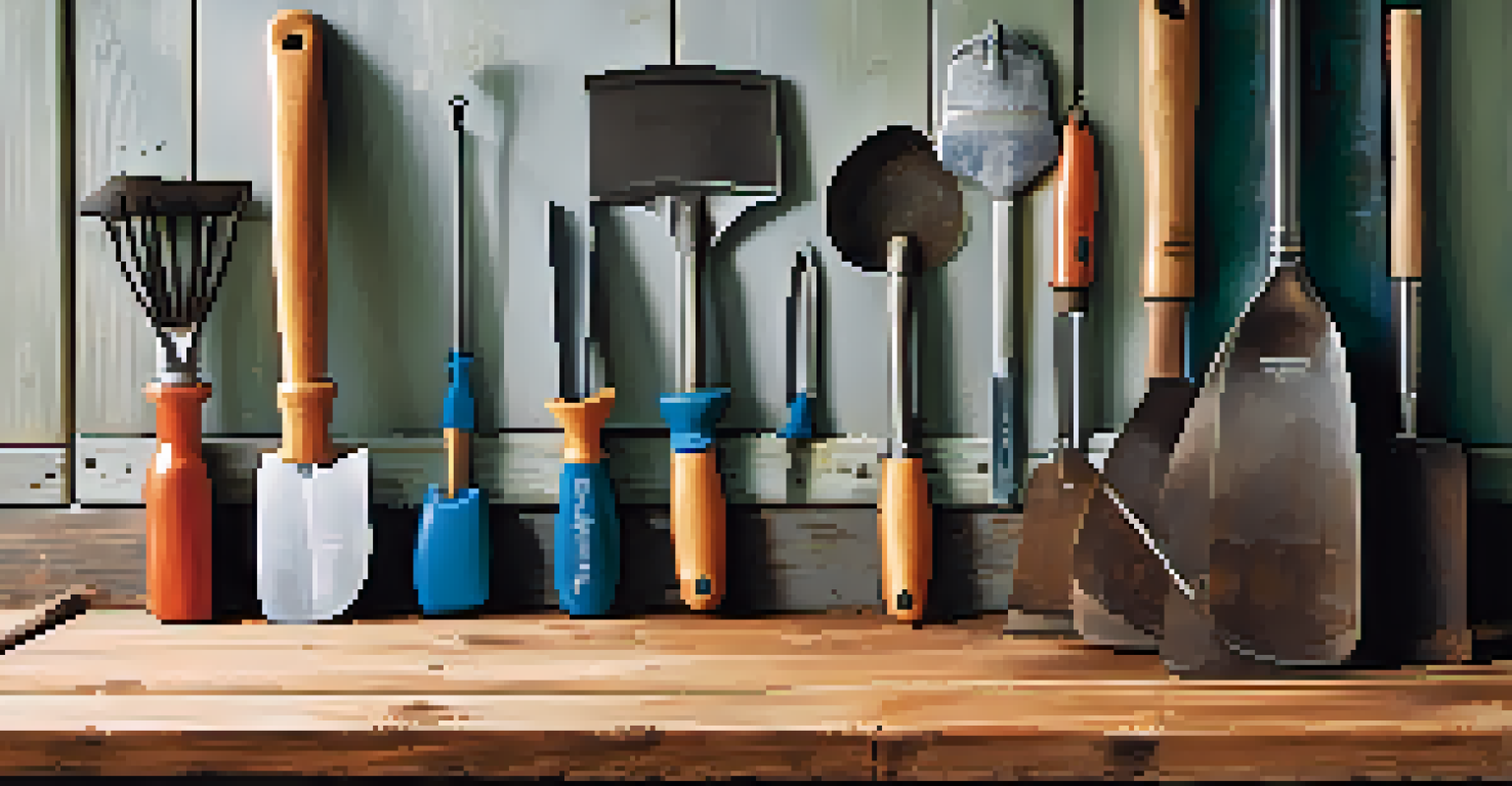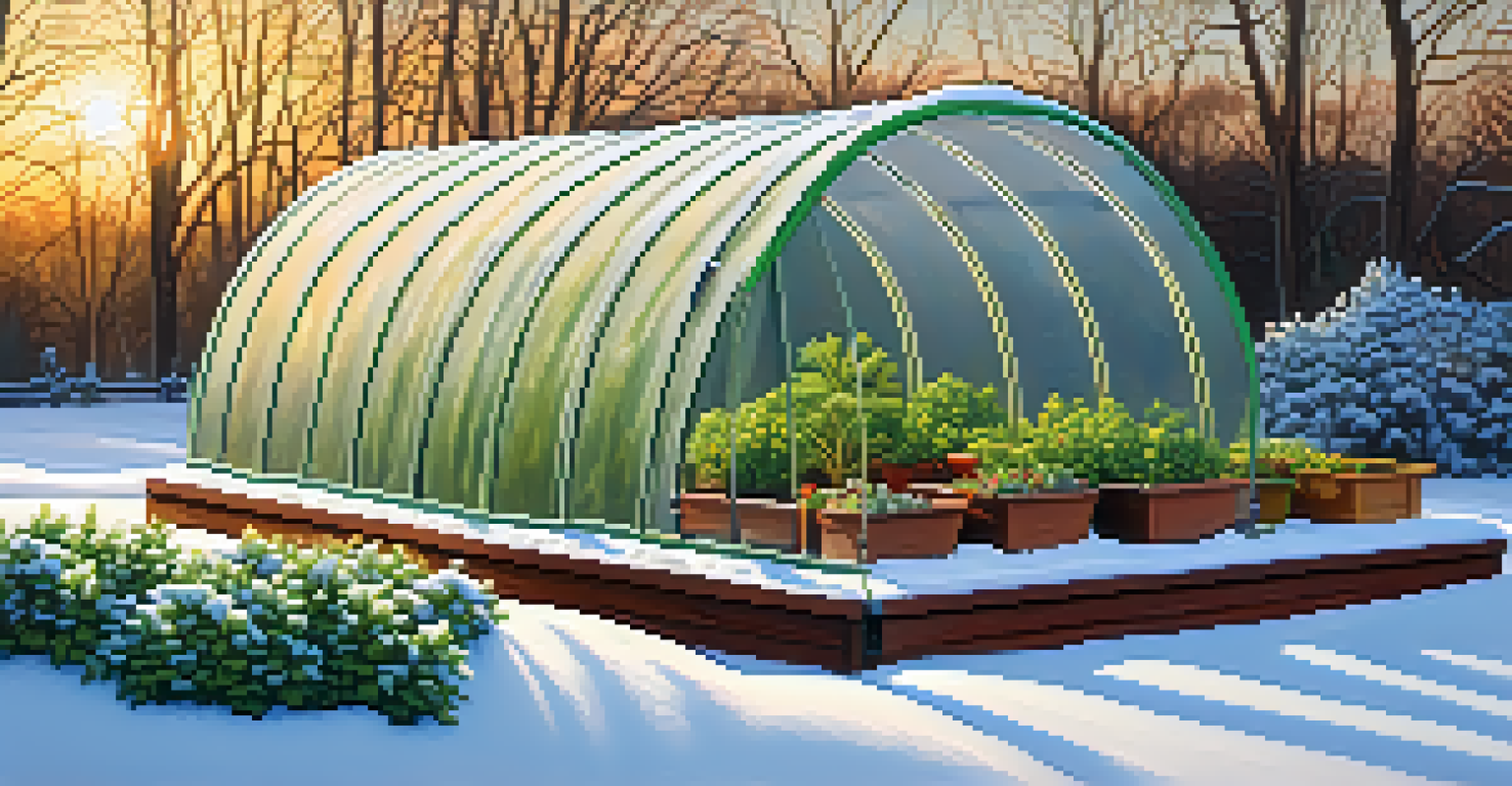How to Choose the Right Tools for Cold Climate Gardening

Understanding Cold Climate Gardening Needs
Cold climate gardening presents unique challenges, especially during harsh winters. Understanding these needs can make your gardening efforts more effective and enjoyable. For instance, knowing when to plant and which crops thrive in cooler temperatures is essential to success.
To plant a garden is to believe in tomorrow.
Gardening tools play a vital role in overcoming these challenges, from planting and maintaining to harvesting. For example, insulated gloves and frost-resistant tools can help you work comfortably in low temperatures. By selecting the right tools, you can better manage the rigors of cold weather.
Moreover, understanding local climate conditions, including frost dates and soil types, allows you to choose tools that will make your gardening experience smoother. This foundational knowledge sets the stage for selecting equipment that meets your specific gardening needs.
Prioritizing Durability in Tool Selection
When gardening in cold climates, durability should be at the top of your list. Cold temperatures can cause materials to crack or break, so selecting tools made from sturdy materials is essential. Steel and heavy-duty plastics are often better choices than lighter alternatives.

Additionally, consider tools with rust-resistant coatings to ensure longevity. For example, opting for stainless steel shovels and trowels can help prevent corrosion caused by moisture and freezing temperatures. Investing in durable tools saves you money and time in the long run.
Durability is Key for Cold Tools
Selecting sturdy, rust-resistant gardening tools ensures they withstand harsh winter conditions and last longer.
It's also wise to examine the warranty and customer reviews of gardening tools. A solid warranty often indicates a manufacturer’s confidence in their product’s durability, while user reviews can provide insights into how well tools perform in cold conditions.
Selecting the Right Gardening Gloves
Gardening gloves are essential, especially in colder climates where exposure to frigid temperatures can be uncomfortable. Look for gloves that provide insulation without sacrificing dexterity. This balance allows you to perform tasks like planting and pruning efficiently.
Gardening requires lots of water, and a big heart.
Waterproof gloves are another important consideration. They keep your hands warm and dry when working with wet soil or during rainy spells. Additionally, gloves with reinforced fingertips can help protect against the wear and tear that often comes with gardening tools.
Lastly, don’t forget about fit and comfort. Gloves that are too tight can restrict movement, while loose gloves may not protect adequately. Trying on different styles and sizes ensures you find the perfect pair for your gardening needs.
Investing in a Quality Garden Tiller
A garden tiller can be a game-changer for preparing soil in cold climates. These tools break up hard, compacted soil, making it easier for plants to establish roots. Electric or gas-powered tillers are often more effective than manual options in snowy or frozen conditions.
When choosing a tiller, consider its size and power based on the area you plan to cultivate. Smaller gardens may benefit from lightweight models, while larger spaces might require more robust machines. A tiller with adjustable tines also allows you to customize the depth based on your specific needs.
Protect Plants with Covers
Using row covers and cold frames can extend your growing season by shielding plants from frost and harsh weather.
Lastly, it's beneficial to check for features like ease of start-up, especially in cold weather. A tiller that starts easily, even in chilly conditions, can save you frustration and time during your gardening tasks.
Choosing the Right Shovels and Spades
A sturdy shovel or spade is essential for any gardener, particularly in colder climates where snow and frozen ground can complicate tasks. Look for tools with strong blades and comfortable grips designed for cold weather use. Stainless steel options often provide better durability and resistance to rust.
Consider the weight of the shovel as well; a lighter model may be easier to handle in icy conditions, but ensure it’s still sturdy enough for digging. Additionally, choosing a shovel with a comfortable handle can reduce strain on your hands and back, making your gardening experience more enjoyable.
Finally, think about the specific tasks you'll be performing. For example, a spade is better for edging and cutting, while a shovel is ideal for lifting and moving soil. Selecting the right tool for the job can streamline your gardening activities.
Utilizing Row Covers and Cold Frames
Row covers and cold frames are excellent tools for extending the growing season in cold climates. These protective structures trap heat and shield plants from frost, allowing you to start planting earlier in the spring and continue into the fall. They can also protect against pests and harsh weather.
When selecting row covers, look for breathable materials that allow sunlight and moisture to reach plants while providing adequate insulation. Similarly, cold frames should be easy to open and close, ensuring you can regulate temperature and humidity effectively.
Maintain Tools for Longevity
Proper cleaning, oiling, and storage of gardening tools before winter helps prevent rust and damage, ensuring readiness for the next season.
Investing in these protective tools can significantly enhance your gardening results. With row covers and cold frames, you can enjoy a more fruitful harvest and a longer gardening season, even in challenging climates.
Maintenance Tools for Winter Preparation
Proper maintenance of gardening tools is crucial, especially as winter approaches. Cleaning and storing tools correctly can prolong their life and ensure they perform well when the gardening season resumes. Take the time to scrub off dirt, rust, and any plant debris.
Additionally, consider applying a protective oil to metal parts to prevent rust during the cold months. Storing tools in a dry, sheltered area will also keep them safe from moisture and freezing temperatures, reducing the risk of damage.

Finally, regular inspection of your tools throughout the winter can help catch any potential issues early. This proactive approach ensures your tools are ready to go when the gardening season begins again.